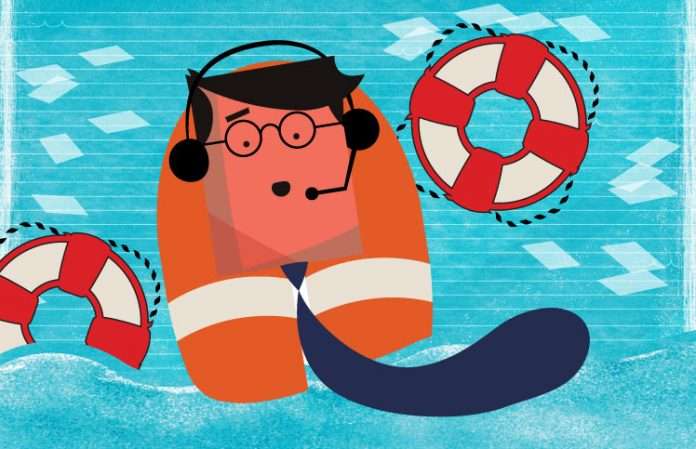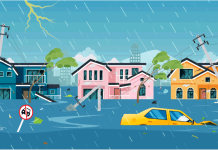
As mentioned in a previous post, developing a people-centric disaster plan should be a collaborative effort that takes place before a disaster strikes. During a disaster, the safety of your staff is the No. 1 priority. Make certain that all of your agents who are onsite or who may be commuting to or from the center are accounted for and out of harm’s way.
When Hurricane Sandy hit the East Coast in 2012, New Jersey’s 2-1-1 contact center leadership were well prepared to handle emergency staffing challenges (see “Inside View: New Jersey 2-1-1 Partnership,” Pipeline, March 2013). In the days preceding the storm’s arrival, the leadership team had worked out a rotational schedule to ensure that managers were onsite 24/7.
Preparations also were made for agents to stay onsite. Although staffing for the storm was on a volunteer basis, managers asked each volunteer to commit to remaining at the center until the storm had passed and it was safe to leave. Management also alerted local police and the Office of Emergency Management that staff were onsite, and that their people might be traveling to and from the facility.
 Practical pointer: Ensure that you have food, emergency supplies and cots available within the facility in case staff need to take shelter onsite. If possible, make arrangements in advance for accommodations at a nearby hotel, as well as food delivery and transportation for your staff, says contact center operations expert Kevin Walsh (see “Winter Weather: Planning for Safety and Success,” Pipeline, October 2016). “Take care of their immediate needs. When non-essential personnel are leaving early as bad weather arrives, your team is doing the opposite: They’re putting themselves in harm’s way by either staying at work, or heading to the designated hotel so that they can make it to work for the next scheduled shift.”
Practical pointer: Ensure that you have food, emergency supplies and cots available within the facility in case staff need to take shelter onsite. If possible, make arrangements in advance for accommodations at a nearby hotel, as well as food delivery and transportation for your staff, says contact center operations expert Kevin Walsh (see “Winter Weather: Planning for Safety and Success,” Pipeline, October 2016). “Take care of their immediate needs. When non-essential personnel are leaving early as bad weather arrives, your team is doing the opposite: They’re putting themselves in harm’s way by either staying at work, or heading to the designated hotel so that they can make it to work for the next scheduled shift.”
If the business requires the center to be open during severe weather, consider incenting agents to work through the storm, Walsh adds. “I have paid double-time to agents who were at work during a winter storm,” he says. “If your business doesn’t allow you to pay double-time, purchase gift cards and recognize their efforts in front of the team when normal operations have resumed.”
After the Danger Has Passed: Provide Assistance and Support
Once the danger has passed, senior leaders will likely be focused on resuming normal business operations as quickly as possible. Yet depending on the severity of the event, you may have employees who have been displaced, are without transportation or who are struggling to clean up their homes in the aftermath.
First things first, check on your people. Make sure that everyone is accounted for. Be aware that those who are at ground zero of a disaster may not have access to working landlines, cell service or Internet during or immediately following the event. Try to reach them using multiple contact methods and give them a reasonable timeframe to check in before alerting human resources.
Keep your staff informed with updates on the business’ restoration progress, as well as local emergency resources. Employees who are the hardest hit may only have limited access to news and may be unaware of nearby assistance. Assign a team member to compile community resource information for those in affected areas, such as updates on local transportation, as well as the locations of emergency shelter sites, food banks, portable cell towers for phone service, medical aid and Red Cross shelters. Also, check with HR to ensure that agents have information about their pay, benefits and other resources provided by the company.
Put a hold on nonessential policies like dress codes and bans on cellphones and private Internet use while your center is getting back up to speed. Consider providing separate computer stations for Internet use and personal email access. Provide as much assistance as possible while your agents are trying to get their lives back in order.
Stress levels will be high following a disaster. Some agents may suffer from post-traumatic stress disorder months after a catastrophe. If your center serves a local customer base, callers will likely be working through strong emotions, as well, which they may unload on your staff. Supervisors and team leads should monitor agents for signs of exhaustion or anxiety, and be available to step in and take over when they sense that someone needs a break.
Consider providing agents with access to stress relief onsite. Temporarily convert a break room or conference room into a “relaxation area” with soft lighting, comfortable chairs and ambient music. If possible, bring in crisis counselors to talk with agents.
It can take weeks—or longer—for a community to recover after a disaster. Supporting your staff during and after a catastrophe calls for a great deal of compassion and understanding. If you want to help your agents get back to their peak performance levels, they need to know that their manager—and employer—values their well-being above all.
Download a PDF of the full article.



